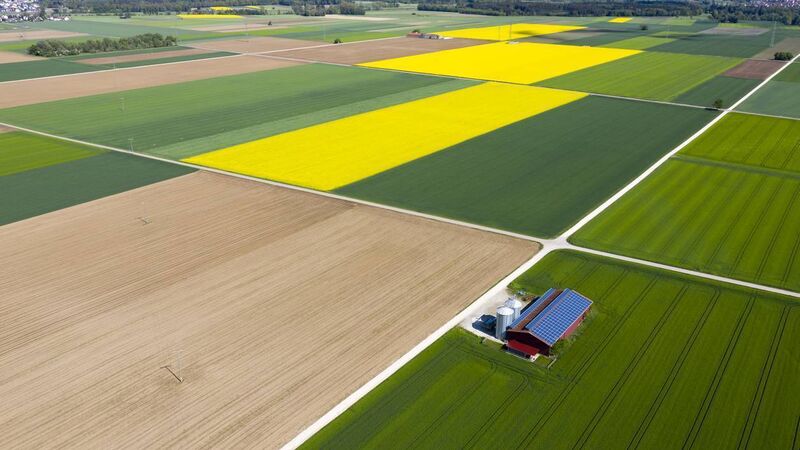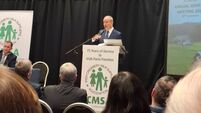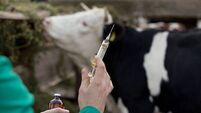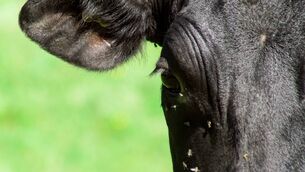How Ireland's eco-schemes fit with European Commission's plans

The 27 EU member states will have 170 different eco-schemes next year, if the European Commission accepts all of their submitted CAP Strategic Plans.
The 27 EU member states will have 170 different eco-schemes next year if the European Commission accepts all of their submitted CAP Strategic Plans.
And countries have proposed no fewer than 260 agri-environment and climate management commitments in the second pillar of the new CAP. More than ever, the Common Agricultural Policy will vary widely from country to country.
It has always been a patchwork varying from member state to member state, but the 27 plans for 2023 to 2027 submitted to the EU Commission will bring even more variation in how agriculture is run.
The environment-friendly eco-schemes will be new to all farmers, but will be applied differently in each country and include measures to encourage precision farming, agroforestry, and organic farming.
Seven member states plan an eco-scheme budget allocation above the minimum requirement of 25% of the €270bn direct payments to EU farmers. Ireland has proposed 25%.
Eight member states propose to use a rebate loophole that will allow them to spend some eco-scheme money on other projects, under certain conditions. A few states opted for one single eco-scheme covering a range of practices (including Ireland) but most have proposed several eco-schemes.
Also new for Ireland will be the Complementary Redistributive Income Support for Sustainability (CRISS). Often referred to as front-loading, CRISS is proposed to redistribute 10% of the direct payments ceiling, based on farm size. Irish farmers are thus expected to receive a €43 per hectare CRISS payment on their first 30 hectares.
More than 10% of total direct payments go for the CRISS (which at least 21 member states have included in their plans) on top of at least 25% for eco-schemes. Only three do not intend to apply CRISS.
Seven member states plan more than 10% for CRISS (the highest share is 23%). Across the EU, the number of hectares to be supported with CRISS is proposed from 8.2 ha to 150 ha.
After allowances for CRISS, eco-schemes, and other schemes, the Basic Income Support for Sustainability (BISS) will amount to slightly more than 50% of the direct payments envelope, but ranging from 31% to 75% in each member state.
Five plan to implement a simplified payment for small farms, with four proposing this to be a lump sum and one a payment per hectare.
All but one member state includes Coupled Income Support (CIS) in their submitted CAP Plans. For 19 member states, CIS is proposed to be more than 10% of the direct payments. Two plan for about 10%, and four propose to have CIS at less than 5% of their direct payments envelopes (including Ireland, which proposes Coupled Income Support only for protein crops).
Ireland is among 18 member states planning CIS for legumes/protein crops. But livestock will account for about 70% of the overall CIS allocations in the EU. Nevertheless, limitations on livestock density are proposed in two member states.
Ireland is one of only five proposing a cap (the Irish plan is that a farmer can receive a BISS payment of no more than €66,000). Only two propose to apply both capping and degressivity (progressive reduction of payments above a certain level).
Three member states propose degressivity only. Six member states propose that labour costs can be subtracted before applying capping and/or degressivity.
Internal convergence returns in Ireland’s CAP plan, with a proposal that the value of payment entitlements for each farmer will reach at least 85% of the average by 2026. One member state plans to reach full national convergence by 2027, and another will reach full convergence at the territory level. Ireland is one of five aiming for the minimum required 85% by 2026.
Nine member states currently applying payment entitlements have decided to abolish them. Risk management tools such as insurance schemes or mutual funds are proposed in 15 member states.
Support for areas with natural constraints and disadvantages are in the CAP strategic plans of 22 member states. Seventeen countries propose payments for Natura 2000 and/or Water Framework Directive requirements.
Ireland proposes the protection of wetland and peatland to be a condition for EU income support from 2024. We are one of four requesting a derogation to 2024, while eight plan to apply this conditionality standard in 2023, and the remaining 12 want a derogation to 2025.
Ireland is one of 21 member states proposing a buffer strip along water courses of at least three meters, while two plan for a 10-meter width.
Ireland intends all farmers will be required to have a minimum share of 4% of eligible area devoted to non-productive areas such as trees, scrub and setaside. The “basic” non–productive areas and features conditionality option (4% of arable land) is proposed by 24 member states.
Ten propose to devote about 50% of the second pillar for green interventions, and one member state plans a share of 81%.
Ireland is one of only six member states to set a target of 41% or more for biodiversity conservation or restoration, with an aim of 49.27% of Ireland’s agricultural area. Eleven states have a target of up to 20%, and seven aim for 21%-40%.
Ireland proposes to reduce emissions or to maintain or enhance carbon storage (including permanent grassland, permanent crops with permanent green cover, agricultural land in wetland and peatland) on 8.88% of the agricultural area. This target across the EU ranges from 8% to 80%.
Twenty-four member states propose to increase their organically farmed area in the new CAP period. The target is more than 10% for 15, including four targeting above 20%. The Irish target is for organics to reach 7.5% of the agricultural area in 2027.
Complementary income support for young farmers (CISYF) is planned by 24 member states.
Most do not plan specific interventions targeting antimicrobial reduction. Reductions are expected to be achieved through actions on animal welfare or organic farming, or by efforts outside of the CAP.
Animal welfare interventions are included in 11 member states’ eco-schemes, in 18 member states’ farm investment plans, and in 21 member states’ agri-environmental commitments.
Ireland is one of only five member states proposing measures supporting rural women, with two member states addressing, in particular, the objective to improve the participation of women in farming.
At the March Council meeting of EU agriculture ministers, the need for the European Commission to approve member states’ CAP plans quickly was emphasised. However, flexibility has been granted to adapt the plans with a view to ensuring food security in the wake of the war in Ukraine, and this could delay approval, as well as add to the varied patchwork of agricultural support across the EU.
CLIMATE & SUSTAINABILITY HUB














